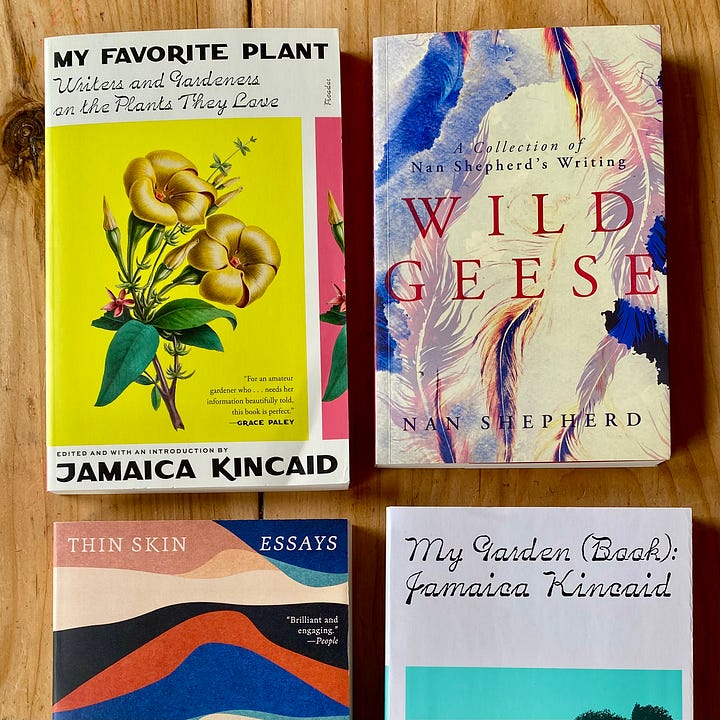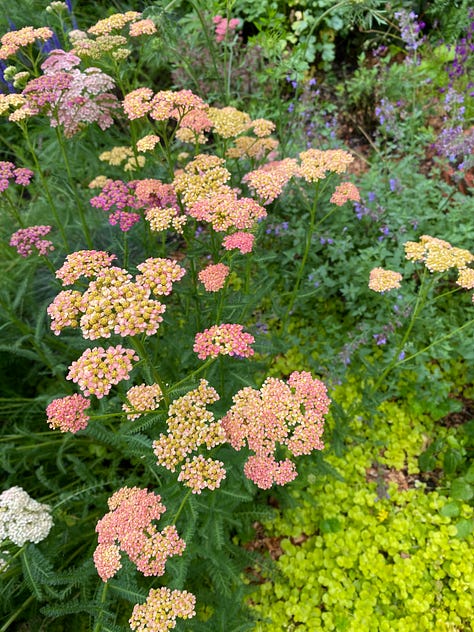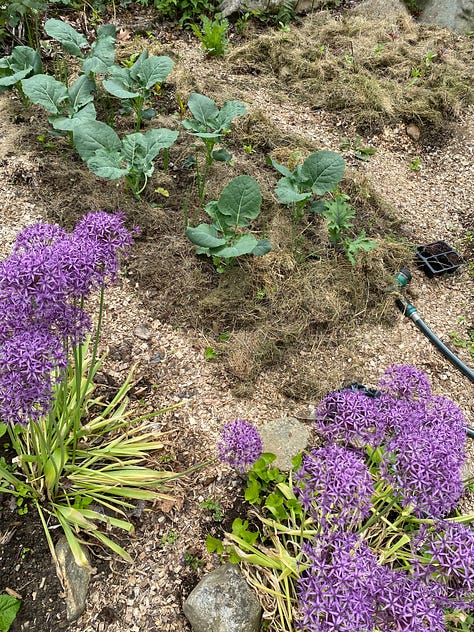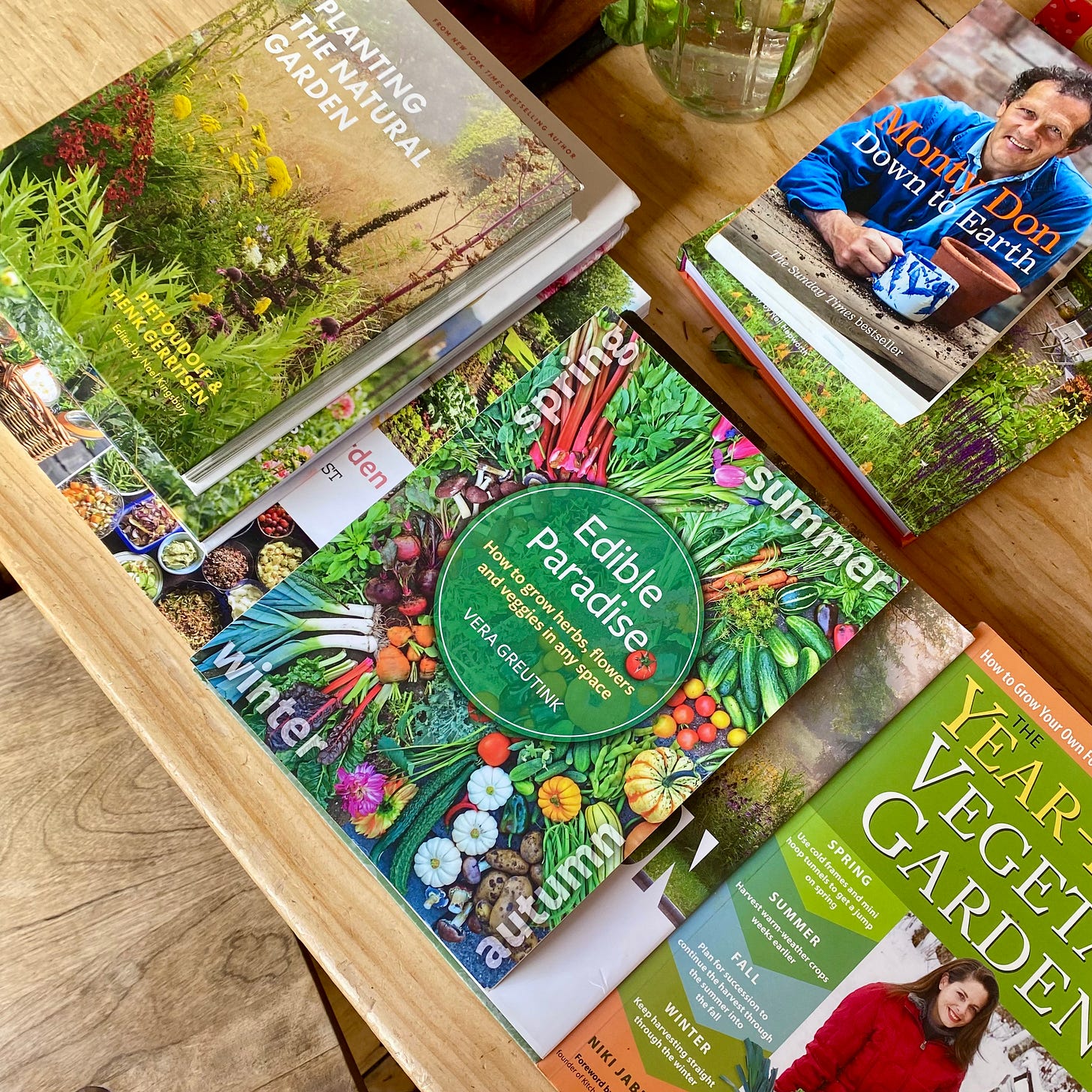

It’s late February and the sun is returning, and the sap is beginning to flow, and as predictable as birds returning north, here I am with my tin of seeds and green-hearted books, starting to map out gardens.
I keep my seeds in an old cookie tin just like my mother does; my mother who has been a professional vegetable farmer for forty years (almost all of my years), selling her tomatoes and greens and berries at her little farm stand just up the road.
As much as I love this tin of seeds, I’ve had a complex relationship with gardening for much of my life. I witnessed how most of the women I grew up around (my mother, my grandmother, my aunts) started gardening each spring with vision and joy and soon became consumed by it—stressed out by the potato beetles, worried about the draught, overwhelmed by the weeds. They spent their summers out in the hot sun bent over their beds of sustenance, shoulders freckled, fingernails caked with dirt, and I thought to myself, from the very beginning: I want this. And I don’t want this, too.
Which is what I’ve been telling myself since each spring as I plant a little bed of herbs and greens, and then expand that garden, or shrink it, or make a new flower patch for the sake of beauty and pollinators. This, yes, but also, not this. I want to be a gardener, a grower, a maker of refuge and beauty, yes, but also a writer, an artist, a woman who relaxes, works with her mind, travels.
And so I try to be careful, rein it in. I want a vegetable garden to walk out into each day in summer that will provide lunch, but I don’t want to be at the mercy of it. I want a nonchalant relationship; we can pick and choose how we relate to growing and the land; we contain, and can nurture, multitudes.
And yet here I am, dreaming big in late February. More cut flowers, I think, organizing my seed: daucus, zinnia, sunflower, cosmos, amaranth, celosia, scabiosa. Perhaps a row of peonies! And dahlias too!
With the vegetables I practice more restraint, keep it simple: peas, beans, cucumbers, swiss chard, kale, broccoli, carrots, beets, greens, herbs. Everything else I can buy from my mother’s farm up the road.
I know I will plant a new fruit tree this year, but what kind, and where? My yard is a patchy clearing in the woods; space and sunlight are precious still. I have a peach tree, cherry trees, and three plums. Perhaps a pear? Or resilient apple?
And perennial gardens: where will the new bed be? Each spring I dig up a little patch of grass and create a new small garden. My process is disorganized and sloppy. There is no master plan, just me and my shovel, eyeing where the light lands. And yet it is beautiful come spring, this garden of mine—last year’s buried daffodils and tulips springing from the ground; the star magnolia exploding in bloom; green popping up everywhere from underneath the snow-drenched leaves.



When the world overwhelms; when policy change seems impossible; when the societal safety networks we’ve all come to depend on seem to be collapsing daily, this is what I return to: gardens. We need to be able to grow food, for ourselves and for others, on healthy, nutrient-dense land.
And when I am overwhelmed by the sorrow of climate change and collapse; when I read about species loss, and carbon levels, and melting ice, I think: gardens. Carbon sequestration within our leafy-green plants; plant roots to contain soil; flowers and fruits as refuge and food for the pollinators and birds, both lingering and passing through.
And when I am overwhelmed by patriarchy, and a world built on money, and the cold dark hearts of greedy men, I think: gardens. We have got to get back to the garden, the place that is the opposite and antidote: naturally opulent, colorful, beautiful, diverse, joyful, humble, generous, and wild.
And lastly, when I am sad, defeated, and afraid, there is one place I most want to go: outside my back door, in my bare feet, out to where the clematis and lavender and lilac grow, out where the air smells like mint and flowers and ferns. I want to walk down to where I grow my vegetables, kneel in the dirt, and pull up weeds. I’ve read that doing so has proven mental health benefits, but I don’t need those studies to know. I feel my nervous system settle out there in that garden. I feel my heart rate slow. I feel, amidst those plants, true belonging.
Today it is cold still, too early to start my seeds. But look how the imaginary garden is already softening me. Look at this pale skin, greening. Look at the pink caverns of this mind and heart: already a little riotous, in bloom.






My favorite line: “There is no master plan, just me and my shovel, eyeing where the light lands.”
This resonates! I wrote something so similar back in January. When I need to be grounded by all the happenings in the world I can’t control, I go to the garden. I think there’s something bigger at play. Like how Elizabeth Gilbert explains how ideas come to us, but are not from us... And I wonder if love is rising up out of the soil and floating around, looking for souls who get it. Souls who are filled with hope and calm and peace when they go to the garden.